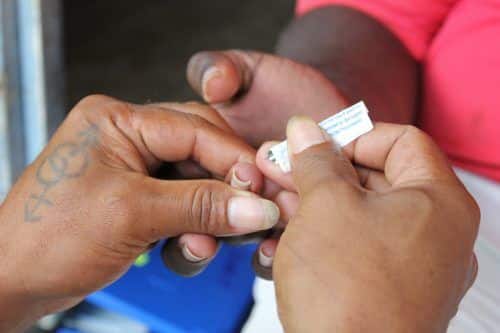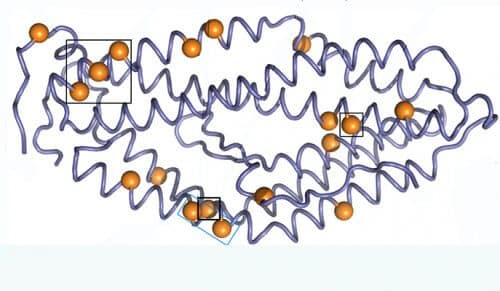Using a new computer program, scientists from the Weizmann Institute were able to design an artificial protein that triggers an immune response that inhibits the malaria parasite. It is possible that the method could even help fight infectious diseases such as Zika and Ebola.

Malaria is one of the most serious infectious diseases in the world. It affects hundreds of millions of people, and every year about half a million people die from it, most of them children in poor tropical countries. The parasite that causes the disease is a master of evasion that goes through several incarnations, both in the patient and in the mosquito that transmits it from person to person. In each of the incarnations, the parasite changes its surface, and becomes a rapidly moving target that makes it difficult for the immune system to "lock" on it. However, this parasite also has an Achilles' heel - a unique protein called RH5, which allows it to anchor on the patient's red blood cells and invade them. Thus, inhibition of this protein suppresses the disease.
In recent years, an effort has been made to produce this protein in the configuration and in the large quantities necessary to use it as a vaccine component. However, similar to vaccine proteins from other infectious diseases, RH5 is also an unstable protein, which breaks down at high temperature, and can only be produced in complex and expensive cellular systems. Since malaria vaccination is required mainly in poor countries, where refrigeration is not accessible, it is doubtful whether RH5 can be used as an effective vaccine in these areas.
To overcome this difficulty, research student Adi Goldenzweig andDr. Sheral Fleishman, from the Department of Biomolecular Sciences at the Weizmann Institute of Science, to improve the stability of RH5. To do this, Goldenzweig developed a new computer program for designing vaccine proteins from infectious diseases. Since these proteins are under constant attack by the immune system, they change rapidly with each generation. Goldenzweig's software utilizes all the information we have regarding the protein configurations in different parasites to calculate a mutant that will strengthen the target protein without impairing its activity. Goldenzweig explains: "The parasite manipulates the immune system by accumulating mutations on its surface proteins. And so, paradoxically, the more the parasite manages to escape the immune system, the more clues it gives us that will allow us to produce a successful artificial vaccine."

Goldenzweig sent the proteins she calculated to a research group in Oxford specializing in malaria vaccine development, led by Prof. Matthew Higgins and Prof. Simon Draper, and the impressive results were not long in coming. While the natural protein cannot be made in simple and cheap cellular systems, the protein she developed can be made in large quantities, thus significantly reducing the production of the vaccine component. The designed protein is also stable at temperatures of up to 50 degrees Celsius, thus solving the main problem in transporting the vaccine kits in tropical countries. And most importantly, animal experiments showed that indeed, the protein provokes an immune response that inhibits the parasite. Dr. Fleishman adds: "The method that Adi developed is completely general. That is, we have shown that it succeeds even where other methods fail because of the properties of the target (eg, the parasite). Since the method is so easy to implement, it will be able to help fight 'new' infectious diseases, which, like Zika and Ebola, need a comprehensive and quick response."
Through a new series of experiments, the scientists hope to test another action strategy against the malaria parasite - which will be based on physical-chemical blocking of the parasite's docking protein. This blocking may be done, for example, by designing an artificial protein that will tightly bind the RH5 protein - thus directly inhibiting the infection.
#Science_Numbers
About 40% of humanity lives in areas plagued by malaria.

3 תגובות
Finding a vaccine for malaria is a tremendous achievement.
Well done
Totally agree with Anonymous
The Jews have always done good to the world!!!!!!!!
Nobel Prize to Adi Goldenzweig and Dr. Sheral Fleishman